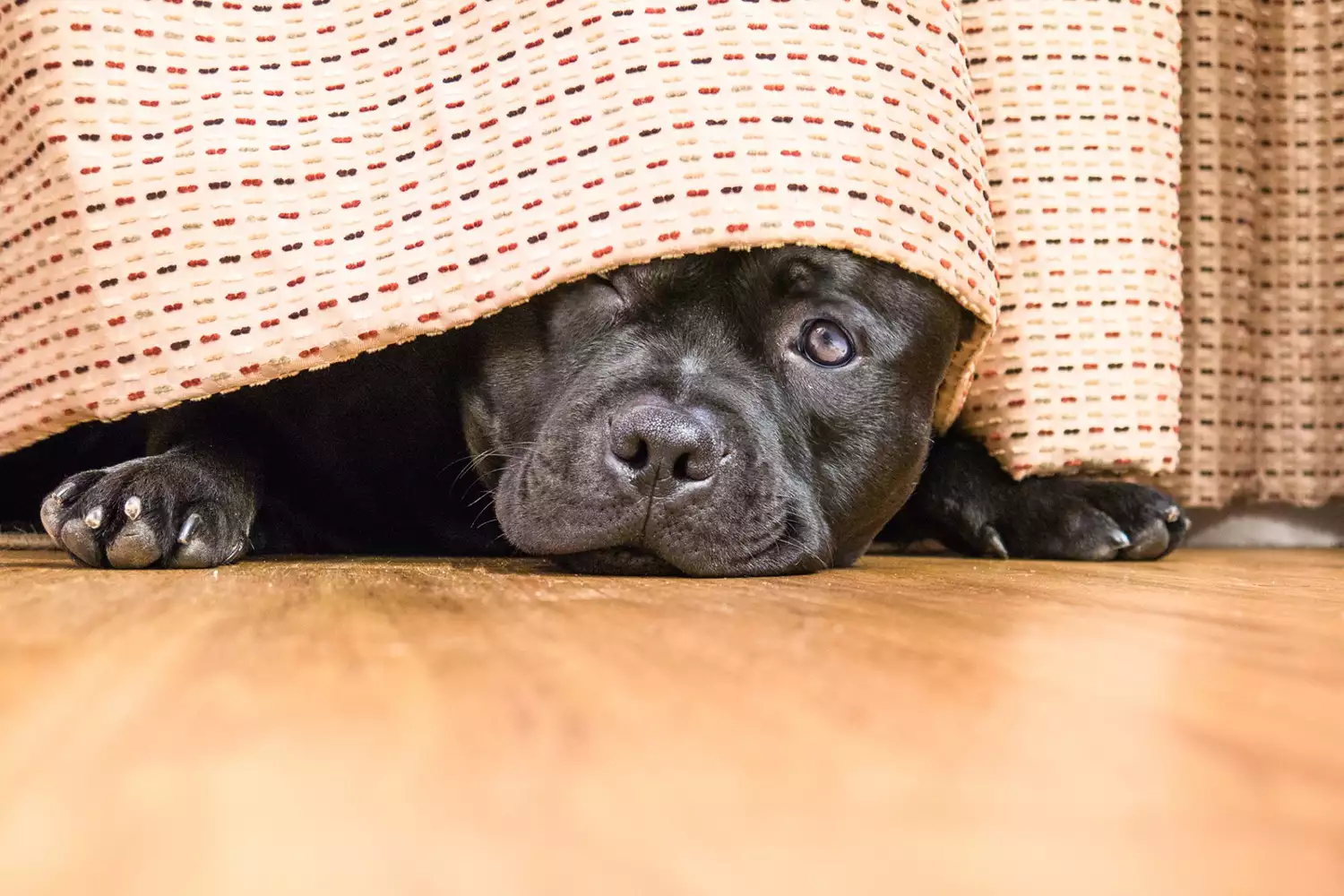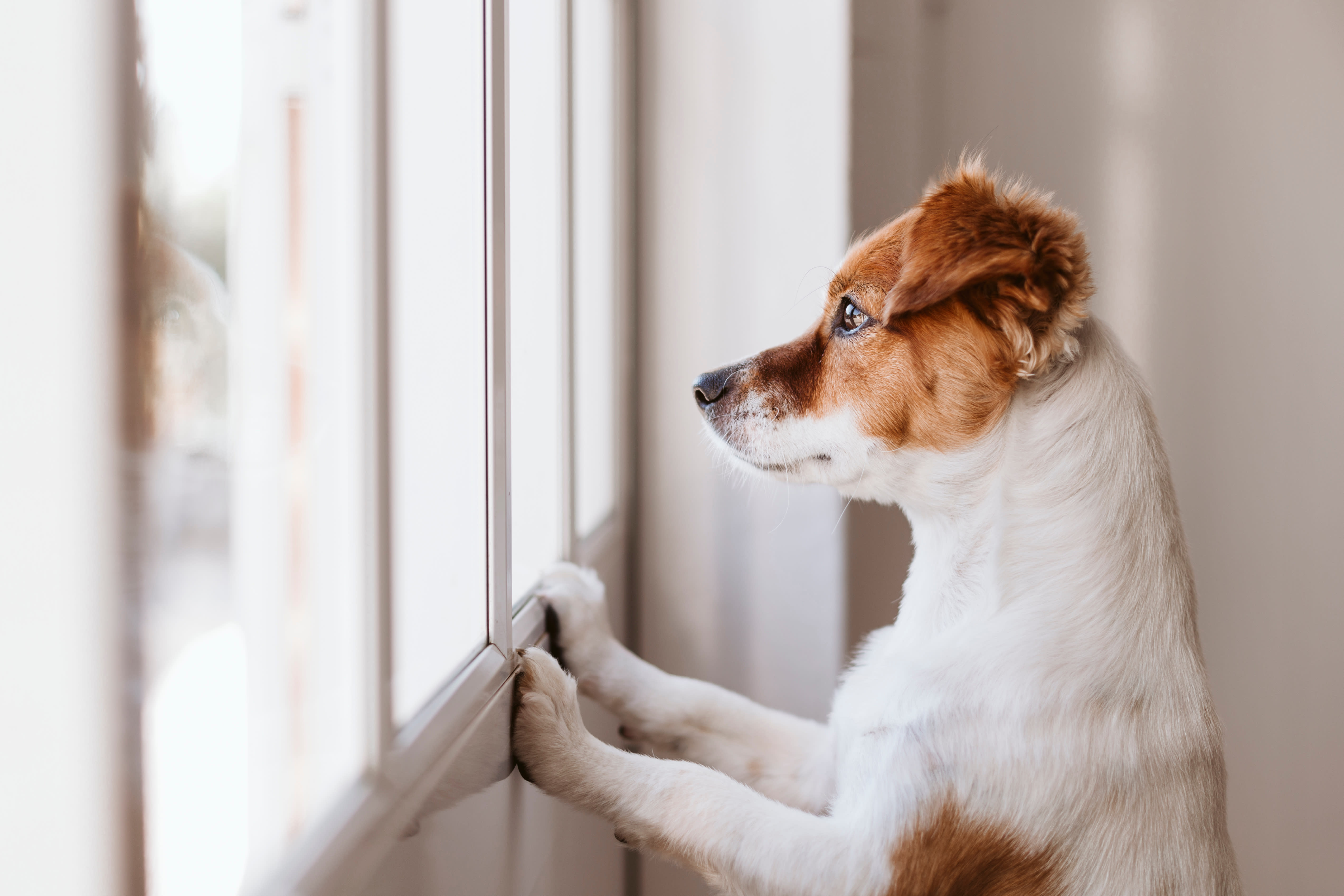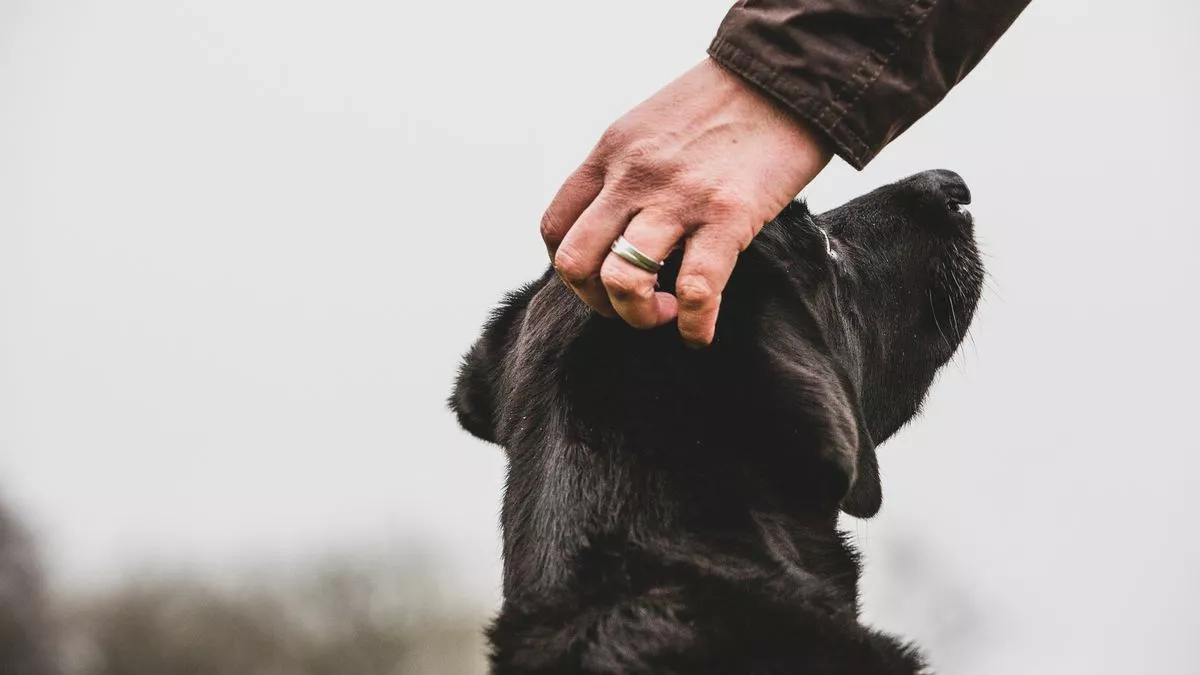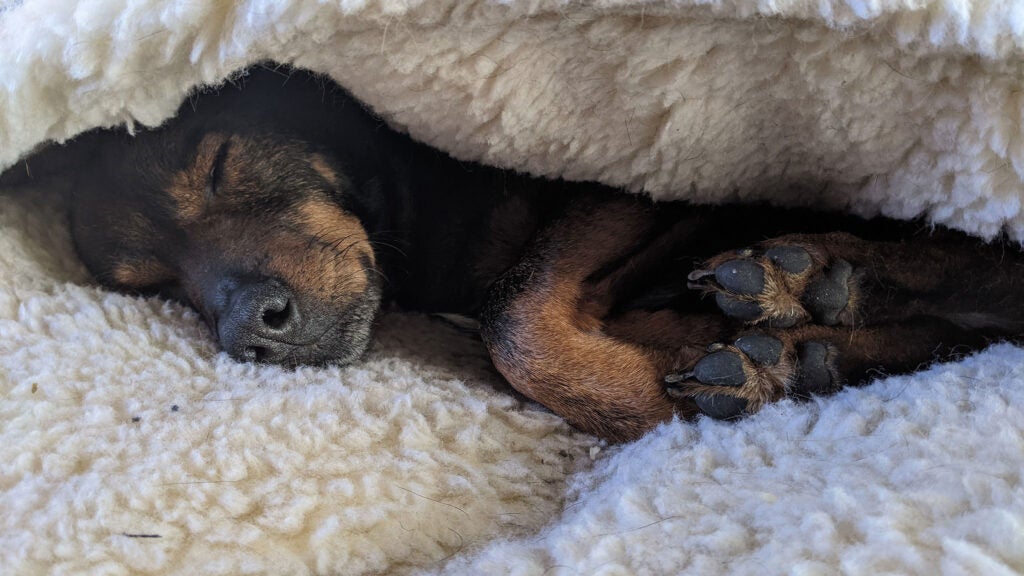Does your pooch act strange or out of control sometimes? Does he seem scared or scare you with his behavior? If so, you might have a reactive dog. We talked with Angela Hoover, LVT, regional technician director with VCA Animal Hospitals and a certified dog trainer, to find out what a reactive dog is and what to do when your canine acts out.
What Is Dog Reactivity?
People often confuse dog reactivity with aggression. But the two are not the same, although they can be related.
Aggressive Behavior
Aggressive behavior is about creating distance from something; the dog is essentially trying to drive a threat away. In fact, most aggressive behavior stems from fear. For example, a dog might be afraid of losing access to a valued resource, such as their favorite human, a toy, or food. Dogs may also behave aggressively when they feel unsafe (like when an unfamiliar person enters their space or corners them).

Aggressive behavior can also be associated with pain—just as it can be in humans. Dogs sometimes also behave in what seems to be an aggressive manner when they are chasing prey, but technically that is not aggression. That is predatory behavior, and predatory behavior isn’t about driving something away; it’s quite the opposite.
If your pup sometimes growls, though, that doesn’t mean you have a dangerous dog. It’s one way your pooch communicates that he wants something to stop or go away. As long as the growl is respected, nothing worse is likely to happen. Problems can arise with dogs who bite or attack with little provocation, however. If a dog frequently acts aggressive (and not necessarily in response to an understandable stimulus), there’s probably a deeper issue going on—possibly even a health concern.
Reactivity
Dog reactivity, on the other hand, doesn’t necessarily indicate aggressive intent. Dogs, like people (and any other animal), react to things in their environment all the time.
Sometimes the reaction is to engage, like when your pup sees a person they recognize or something else they are excited about. In fact, the dog might be so enthusiastic about engaging that they start to bark and lunge out of frustration at not being able to get to that person or thing right now.

Other times, the reaction is to observe or ignore, like when a leaf flutters in the wind.
In some cases, the dog has a defensive reaction because something seems threatening. Canine reactivity is most often an overreaction to something that triggers anxiety in your dog. Dogs that are stressed may:
Bark and lunge
Cower and hide
Make quick turns
Shake/tremble
Whine
Lift one paw
Yawn when not sleepy
There are too many possible behaviors to list them all here, but you get the idea
Common triggers that set off reactive dogs include:
Strangers approaching the house (such as a postal worker, delivery person, or gardener)
Other dogs or people passing by
People with facial hair, hats, or medical equipment—anything your dog may not have been exposed to when they were a puppy
Loud vehicles such as motorcycles and semi-trucks
Barriers such as crates or fences that prevent free access to an area
There are many other possible triggers that you may discover as you observe your dog
In some cases, the dog is barking and lunging because they really want to get to something and are frustrated that they can’t. In other cases, they are a little uncomfortable, and they learn that behavior like barking and lunging makes the threat go away. For dogs who are feeling anxious, the behavior is reinforced, too, because your dog experiences relief after he acts out and the threat disappears. In the dog’s mind, it’s simply cause-and-effect. In other words, a reactive dog’s excitement and anxiety may cause them to exhibit aggressive behavior. If left unaddressed, the aggression may get worse.
How to Reduce Reactive Behavior
Helping your pup overcome reactive behavior involves both understanding his triggers and doing some training.
Figuring Out Your Dog’s Triggers
“The first thing I recommend to stop reactive behavior is for pet parents to keep a journal and write down when their dog has a reactive moment,” Hoover says. Be sure to write down the day of the week, the time, the weather, and anything else that occurred. Noting all the details will help you spot what’s triggering your dog.
Some dogs go on high alert when it’s rush hour and they hear traffic. Others may become fearful at night or when their vision is impaired. If you have an older dog that’s starting to lose his vision, for example, your pooch may get anxious hearing noises but not being able to see what’s going on.

Counterconditioning and Desensitization
Because reactive dogs have learned to be afraid of certain things, you need to help them develop new emotional responses to the perceived threat. One way to do this is through counterconditioning and desensitization (CC&DS). CC&DS helps dogs turn their negative associations (like thinking, “the postal worker is scary”) into positive ones (like thinking, “the postal worker is awesome because when he comes I get treats”). In other words, the training helps canines feel comfortable around what previously set them off.
Counterconditioning and desensitization is a gradual process. You slowly expose your dog to the trigger and provide high-value rewards at the same time, says Hoover. A certified dog trainer or certified behavior consultant can help you come up with a plan for changing your dog’s specific reactive behavior and model the steps for you. That said, here’s an example of how it works:
If your dog lunges at other dogs whenever you’re on a walk, carry a treat bag with you on all your walks.
When you see another dog coming in the distance, watch your dog and wait until he notices the other dog.
As soon as your dog notices the other dog, start offering him small pieces of cheese, meat, or some other treat your dog loves.
Once the other dog has passed by, stop feeding and continue your walk.
Essentially, you are teaching your dog that treats start when another dog appears and stop when the other dog goes away. This teaches your dog that other dogs make treats happen (yum!) and that when another dog is around, it’s worthwhile to check in with you (since you will be offering treats). With patience and time, your dog will learn that other dogs go away on their own without him needing to react. CC&DS can also help your dog understand that other dogs aren’t a big deal.
What To Do When Your Dog Shows Reactive Behavior
When you see your dog starting to get worked up or see something you know is a trigger, it’s best to remove your pup from the situation. That way, he can calm down. Start by trying to coax your dog away using a happy tone of voice. You can also put a treat near him and see if he will follow it away. If none of that works, the safest way to move your dog is to clip a leash on his collar (if he isn’t already on a leash) and take him to another area. A dog who’s upset may lash out at you if you pull on his collar or swoop him up in your arms, so using a leash keeps you safer. That said, please don’t yank on the leash or scold your dog, says the Animal Humane Society, because this only adds to your canine’s anxiety level.
If you know that your dog has reactive behaviors, Hoover suggests preparing ahead of time. Keep high-value treats easily accessible at home and make sure to carry lots of treats with you whenever you take your dog out, too. That way you can do mini-training sessions whenever you spot a potential trigger for your dog.

Can Dog Reactivity Get Better?
“Many times reactive dogs can [improve] with very consistent training and work,” Hoover says. “However, when a fear-based behavior becomes ingrained in a dog, it may never entirely go away. If that’s the case, you can decrease the reactivity but you have to continue to manage that for the rest of their lives.” That means continuing to give treats to keep your dog’s reactive behavior in check and reducing your dog’s exposure to triggers.
Modifying your dog’s behavior won’t happen overnight. But with patient training, you should see a calmer and more confident pup.



